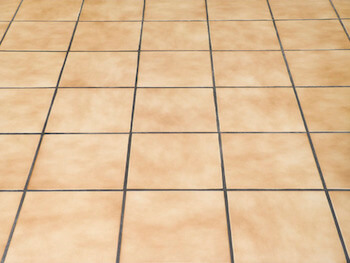Nothing is as strong or as durable as ceramic tile. That’s why you’ll find ceramic tile in many homes throughout Colorado. From entryways, to kitchens, to bathrooms, it’s the perfect addition to your home.
While ceramic tile is one of the most durable and maintenance free flooring choices available, it still has its limitations. Some foods, chemicals, minerals, or other spills have natural stain qualities, and when left for periods of time can leave permanent remnants behind. The stain can penetrate the porous finish and become difficult to remove.
When it comes to deep saturated spills, there are a number of things to try:
- Bleach
- Hydrogen peroxide
- Steam cleaning
In all cases, use a small amount of the cleaner, and work into the stain with a small brush. Clean and rinse periodically to test to verify if the stain has been removed and to make sure the chemicals aren’t penetrating the color of the tile.
In addition to tiles being impacted by spills and stains, you may also find grout impacted by the stain. If a stain impacts the grout as well as the tile, you can try removing it by following the same steps mentioned above.
However, for grout stains that can’t be removed with a stain removal system, you may have to remove the grout altogether.
At the time of installation, it’s a good idea to keep a few extra tiles and extra grout on hand for these situations. Than you’ll have the color in place and ready to go.
If you don’t have extra on hand, you still have options. Remove the stained grout with a small grout remover, which can be bought at any home improvement store. Bring your grout sample in and we can help you match grout color as closely as possible. Once you have the material, mix and pour into the space you’ve created. Use a gloved finger to firmly push and seal grout into the effected area, taking care to blend it in with the other grout around it. Wipe the area clean with a damp sponge to remove excess grout from the tile.
